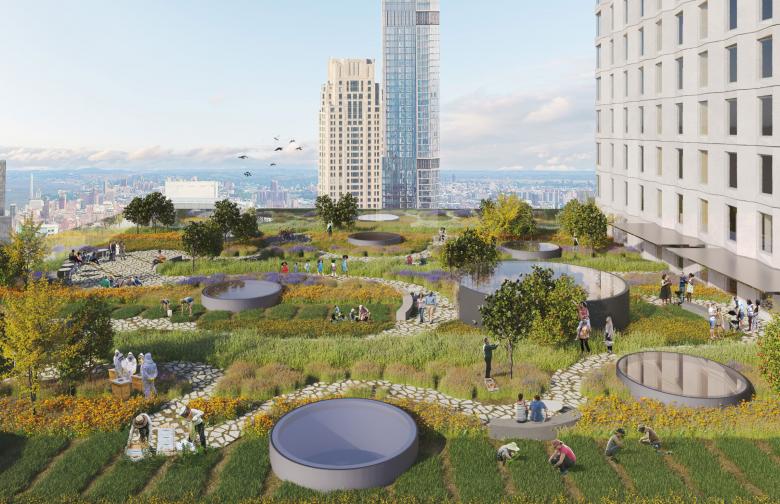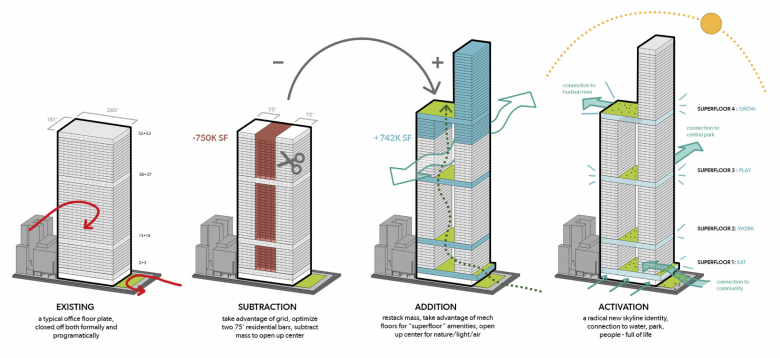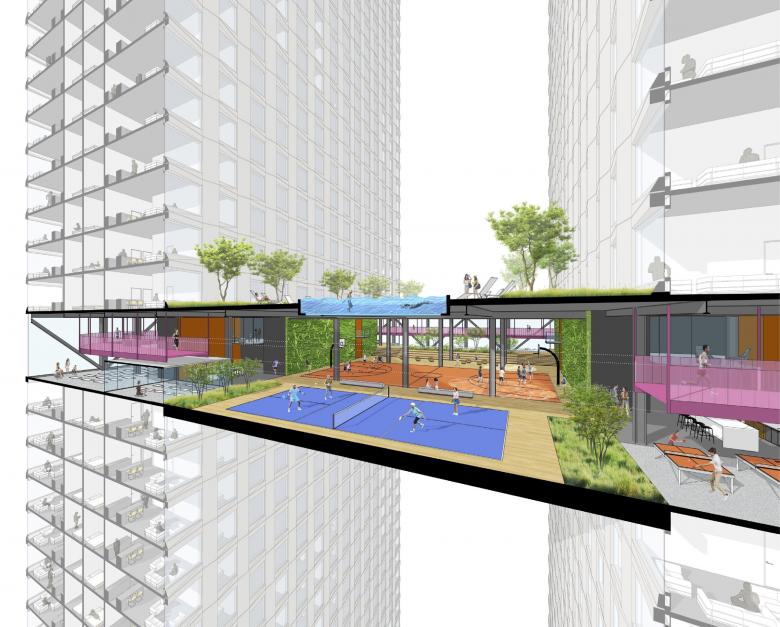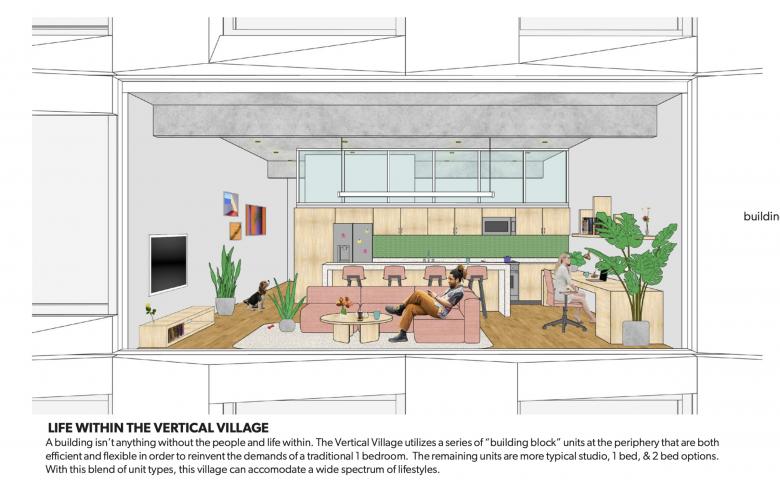16. April 2023
Vertical Village by Atelier Ten, Buro Ehring, STUDIOS Architecture (All images courtesy of Metals in Construction Magazine)
The winner of Metals in Construction Magazine's 2023 Design Challenge, which asked entrants to envision concepts for redeveloping a Midtown Manhattan office tower for residential use, cuts up a modern skyscraper to create a Vertical Village with “neighborhoods in the sky.”
The themes of the annual ideas competitions organized by Metals in Construction, the magazine of the Ornamental Metal Institute of New York, are often aligned with current themes and, more often than not, tackle the typology of tall buildings that predominate in Manhattan. In 2017, for instance, they asked architects and engineers to submit visions for “combatting global warming by reducing the embodied energy in their design for a high-rise building.”
This year's Design Challenge is particularly timely, coming as white-collar employees in the post-pandemic era continue to work from home, leaving many office spaces empty. “The popularity of remote work has put office tower occupancy around 40% of pre-pandemic levels,” per the design brief, such that, “building owners are looking for new uses for their properties.” But with office floor plates considerably larger than the shallow depths required for residential uses, as mandated by the NYC Building Code, how can office buildings be realistically retrofitted?
The design brief gave entrants one skyscraper to tackle: the 48-story, 2.5-million-square-foot office building at 1633 Broadway (aka Paramount Plaza) in the Theater District. The winning scheme, Vertical Village, by a team of architects and engineers from Atelier Ten, Buro Ehring and STUDIOS Architecture, takes a subtraction-addition-activation approach that results in what is effectively two towers linked by a trio of sky bridges, or “superfloors.”
Images of Vertical Village, accompanied by descriptive captions, are below, but be sure to visit the Metals in Construction Magazine website to see more of the winner, read comments from the jury, and see images of the five other finalists.
Although the design brief directed competitors to a specific building at Broadway and West 50th Street, the winning team highlighted how their approach could work with many other office towers built in Midtown Manhattan in the 1960s and 70s.
The winning scheme turned the blocky building at 1633 Broadway into a taller, asymmetrical stepped tower with voids at its center.
The step-by-step diagram clearly expresses how the problem of deep floor plates for residential conversion is avoided — by splitting the former office building into two towers linked by mixed-use superfloors at the office's mechanical floors.
The section diagram illustrates how the residential stacking is interrupted by the mix of superfloors that contribute to the Vertical Village monicker.
One such superfloor is given over to recreation, with basketball, pickleball and a pool bridging the void between towers and an outdoor lounge capping the bridge.
But how to structure an office building effectively cut up into a pair of mixed-use residential towers? Another series of step-by-step diagrams illustrates the addition of belt trusses with outriggers and the new unitized facade clipped onto the reimagined building.
A sunken plaza at the base of the building is filled in, and the first two floors are given over to public uses to “[connect] the residents above to the lifeblood of the city streets below.”
The typical floor plan shows the two slab-like towers with double-loaded corridors and new cores oriented toward the central void. One-bedroom “building block” units comprise the majority.
According to the design team: “The Vertical Village utilizes a series of ‘building block’ units at the periphery that are both efficient and flexible in order to reinvent the demands of a traditional 1 bedroom.”
- Atelier Ten: Chad Groshart; Joseph Guida
- Buro Ehring: Tania Lopes; Juan Paulino; Kelly Tam; Holger Schulze-Ehring
- STUDIOS Architecture: Ata Aksu; David Burns; Frank Gesualdi; Brian Kim; Anais Marston; Sara Schuster; Nando Tirado









